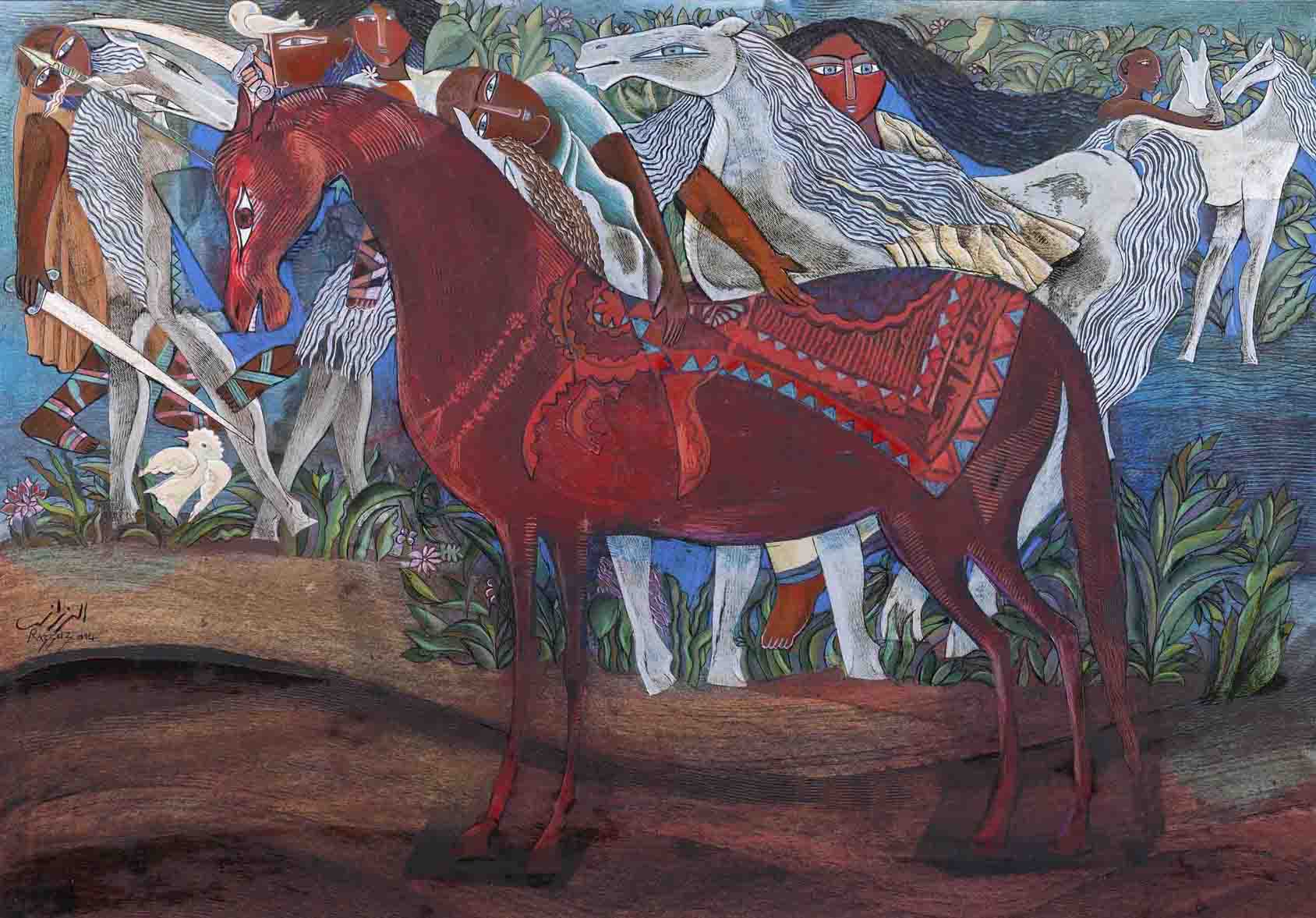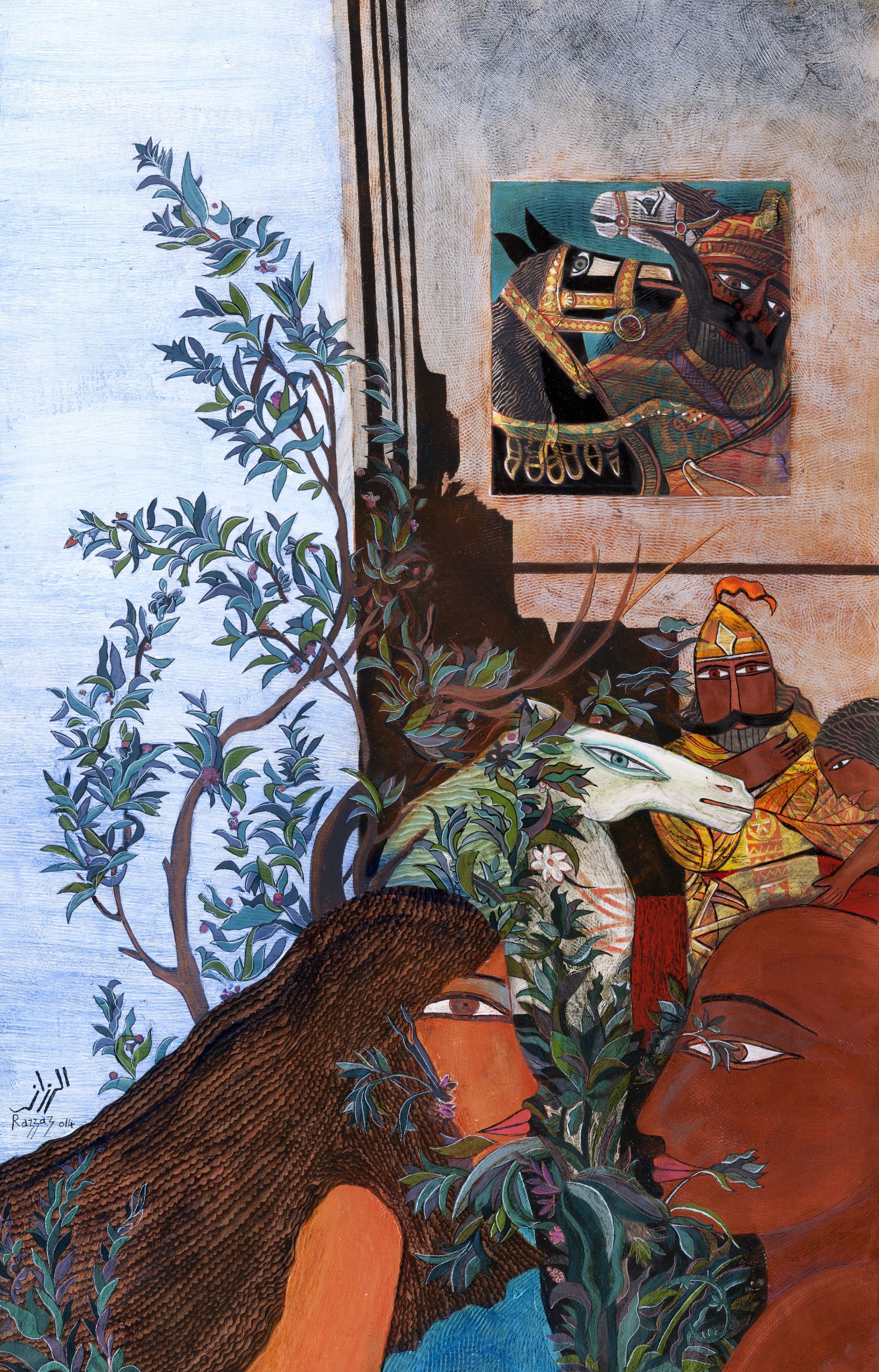ANTARA, the icon of chivalry and early symbol of equality between master and slave, white and black. His stature remained prominent, representing an ideal in the fabric of the Arab people, and his story transformed into a heroic legend of safeguarding the weak and oppressed. Those who hear narrations about him earn psychological soothing of their suffering, deprivation and marginalization.
ANTARA broke into my paintings since the early sixties of the last century, as an expression of the spirit of the Arab Renaissance and as a symbol of the revolution coupled with nobility, equality and justice in the balance of power and peace. ANTARA has since continued to come in and out of my paintings and sculptures. He is the owner of a permanent right in my conscience and in my art, as an ethereal symbol of the values that resonate with me profoundly.
In the wake of the revolutions of January 2011 and June 2013, those values resurfaced, echoed by millions of consciences and voices, strongly amongst those were the victims and martyrs.
ANTARA emerges, in this exhibition, as the guest of honor.
I have found myself, more than ever before, getting closer to the spirit of the stereotypical ANTARA, which is fixed in the minds of the people and which has been presented by folk artists in Egypt, Syria and Tunisia. With his brightness, eccentric moustache and piercing eyes, these works of him resonate with the popular vision of the Egyptian and Arab street
About the Artist
Mostafa El-Razzaz was born in 1942 in Cairo. He is a brilliant name in the field of graphics, as he is the Egyptian artist who reached the world through graphics
El-Razzaz attended the Higher Institute of Art Education, and graduated in 1965 where he learned a lot of works of art including painting, Sculpting, Pottery, and printmaking. Later he earned a master’s degree in art education in 1972.In 1974, he continued his studies in arts and crafts at the University of Oslo. In 1979, he received his Ph.D. in philosophy from the University of New York, Brooklyn.



















